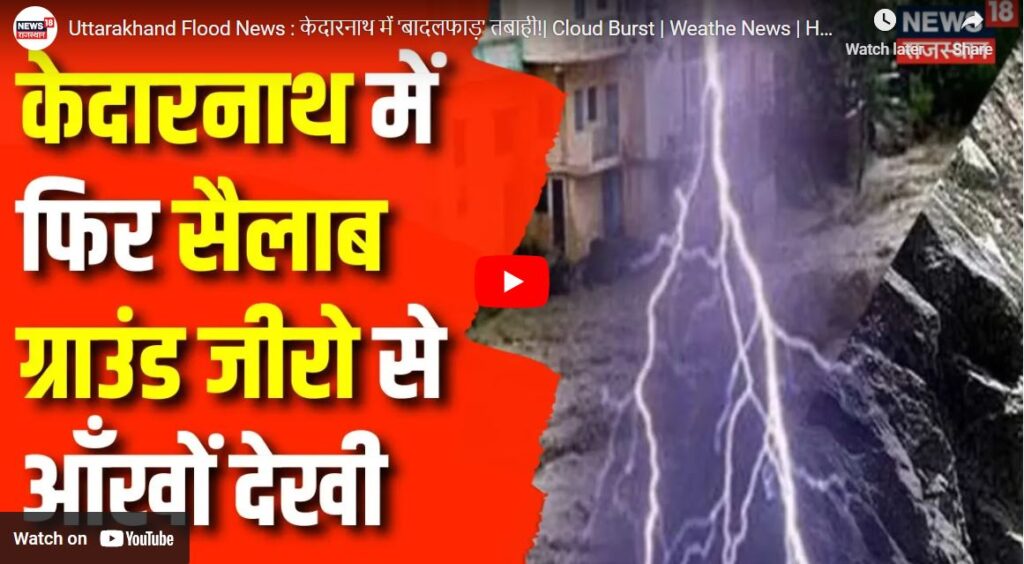કેદારનાથમાં વરસાદે મચાવી તબાહી
Kedarnath, a significant pilgrimage site in the Indian state of Uttarakhand, often experiences heavy rainfall, particularly during the monsoon season. The region’s rugged terrain and high altitude can exacerbate the impact of heavy rains, leading to serious natural disasters. Here’s an overview of the effects of heavy rainfall in Kedarnath, historical events, and safety measures to consider.
Historical Impact of Heavy Rainfall in Kedarnath
One of the most catastrophic events was the 2013 Uttarakhand floods:
- Heavy Rainfall: Continuous torrential rains and cloudbursts led to unprecedented flooding.
- Flash Floods: The excessive rainfall caused the Chorabari Glacier lake to burst, resulting in flash floods and massive destruction.
- Loss of Life and Property: Thousands of people lost their lives, and numerous buildings, including the Kedarnath Temple, suffered extensive damage.
Causes of Heavy Rainfall in Kedarnath
- Monsoon Season: The southwest monsoon brings heavy rains from June to September, which can lead to flooding and landslides.
- Geographical Factors: The steep slopes and narrow valleys in the region can cause water to accumulate quickly, leading to flash floods.
- Climate Change: Increasingly erratic weather patterns due to climate change can result in more intense and unpredictable rainfall.
Effects of Heavy Rainfall
- Flooding and Flash Floods: Rapid accumulation of water can lead to dangerous flash floods, sweeping away everything in their path.
- Landslides: Saturated soil and loose rocks on steep slopes can trigger landslides, blocking roads and isolating communities.
- Infrastructure Damage: Roads, bridges, and buildings, including historical and religious sites, can be severely damaged.
- Displacement and Loss of Life: Heavy rains can lead to the evacuation of residents and pilgrims, with potential loss of lives.
Safety Measures and Preparedness
- Stay Informed: Keep up with weather forecasts and warnings issued by the Indian Meteorological Department (IMD).
- Emergency Kit: Prepare an emergency kit with essentials like water, food, medicines, flashlight, batteries, and important documents.
- Avoid Travel During Heavy Rains: If possible, avoid traveling to or within the region during the monsoon season.
- Follow Authorities’ Instructions: Adhere to the instructions and evacuation orders from local authorities and disaster management teams.
- Stay in Safe Shelters: In case of heavy rains, move to higher ground and safe shelters as recommended by authorities.
- Community Preparedness: Local communities should have disaster response plans, including designated safe areas and communication strategies.

Conclusion
Kedarnath, with its historical and religious significance, is vulnerable to the effects of heavy rainfall. Understanding the risks and being prepared can mitigate the impact of such events. Awareness, timely information, and preparedness are key to ensuring safety during heavy rainfall in this region.